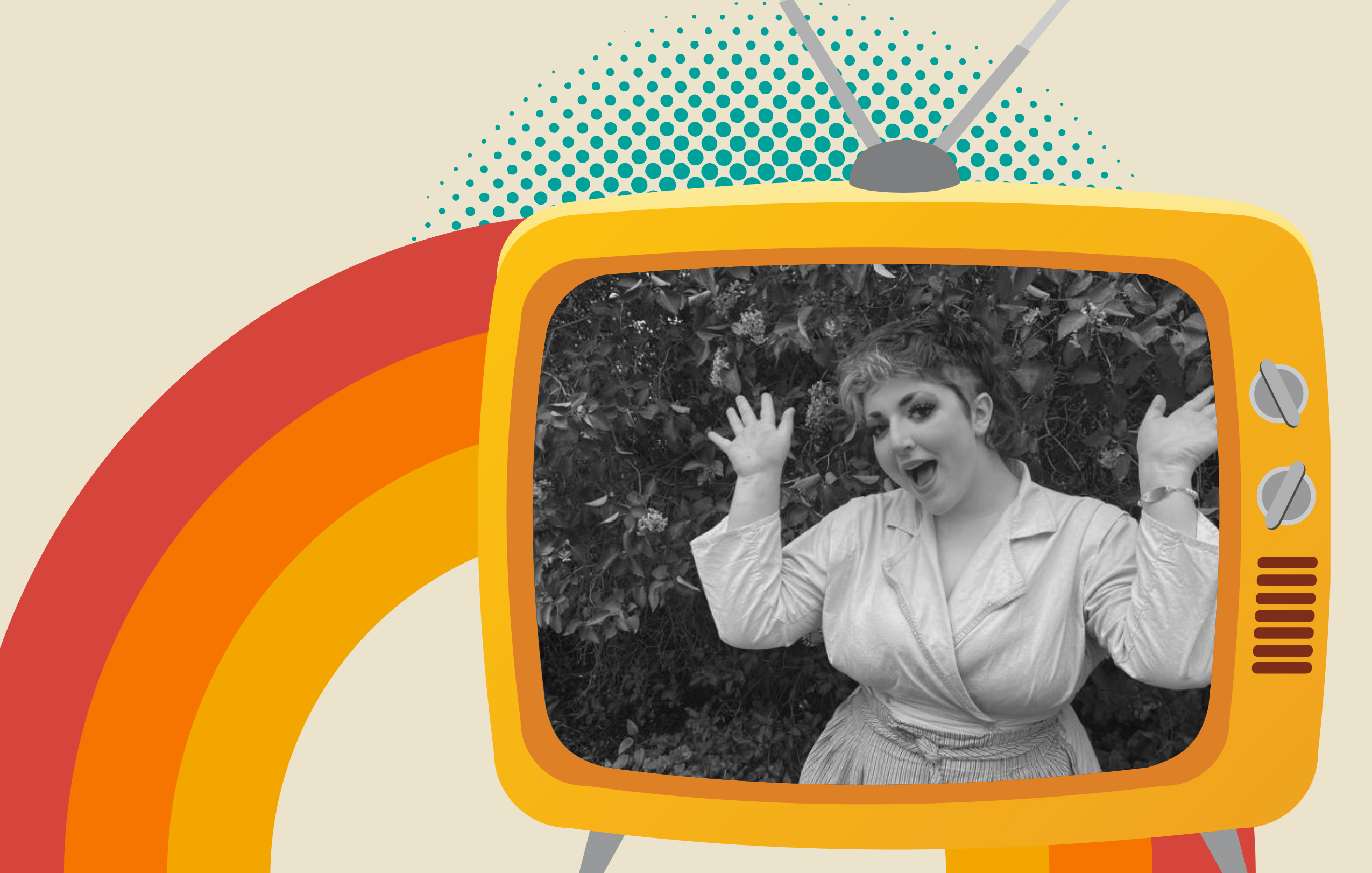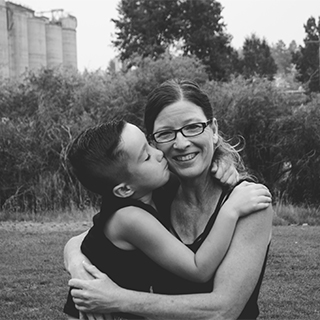My Perspective: Old TV Static–Finding My Way Through Medical Trauma

By Bee Croyle:
Bee Croyle works as a direct support professional taking care of adults with intellectual and developmental disabilities, while being chronically ill themself. They are non-binary and use they/them pronouns! They have two birds and a guinea pig that they love dearly, and they are an artist; their favorite forms of art being crochet and painting.
The summer between my freshman and sophomore year of high school, I went to camp in Oregon. Halfway through my week there, my legs stopped working. It happened slowly at first, the feeling of old TV static climbing up my legs till I was in a wheelchair. Then came the pain. Now it’s something I deal with most days and it’s fine, but at the time I felt like all the world’s worst feelings were shooting down my back, to my toes, and up again. My youth pastor took me to the ER, and at first, they told me nothing was wrong; it was just some hip pain.
Here’s where my first tip comes in: always always advocate for yourself and others.
Luckily, they took a urine sample and found evidence of a kidney stone, so they took me in for a CT scan. The results: I did have a kidney stone but they also found what looked like a cyst. They did an MRI and found a cyst in my spine. Then they told me I only had a week or two to see a neurosurgeon or there would be risk of permanent damage to my legs.
The closest hospital able to take me was Seattle Children’s Hospital, 480 miles from home. I ended up being one of the most complex cases that Seattle Children’s has ever seen for my condition. In total, I have had 34 surgeries. I had surgery once a month for 17 months in a row. I had a lumbar-peritoneal shunt [1] placed, which is fancy talk for a medical device to drain fluid in my back.
My second tip: find your adventure.
For me, my adventure was trips to the vending machine at 2 a.m. with my mom. It doesn’t have to be a lot, it just has to make you happy. I learned to be comfortable in the chaos of random road trips to Seattle for emergencies, looking forward to little things like road trip snacks and visits to my favorite antique store about two hours outside of Seattle.
There was a period where I felt comfortable and stopped having surgery as often. I was down to a few times a year. I didn’t think it would get worse, but it did. One night I crawled to my parents’ room because I couldn’t walk from the pain. I had a pool of infected spinal fluid in my stomach. It was bacterial meningitis [2]. This was one of four times I have been life-flighted. I had an emergency surgery that night so they could remove my shunt and essentially wash out my insides. I woke up a few days later in ICU.
For the next two months, I had surgery once a week to drain spinal fluid from my cyst and had the big room at Seattle. The ‘big room’ is reserved for kids who are going to be in the hospital for a long time and are presumably doing pretty bad. The first week I couldn’t keep anything down, so I got nutrition from a port. My arms were covered in purples and blues from all the bruising from IVs and blood draws.
My next tip is to find new comforts.
I found my comfort in the rooftop garden and painting. Feeling the warm sun, surrounded by flowers, a beautiful view of the space needle, and cute little snails that would climb all over my hands.
A few months later, I ended up needing brain surgery. My team of neurosurgeons said, “We have no idea if this will work or not. We have never used a ventriculoperitoneal shunt [3] to treat an arachnoid cyst [4], so we’re going to try and see if it helps.” This wasn’t the first time my neurosurgeons invented things for me, but it was the first time it worked!
Lastly, find yourself.
The next time I was back in Seattle, they had destroyed the rooftop garden and shaved my head. Both seemed like bad things, but like I said, find new comforts. I started to find myself. I learned I love having short hair, which helped my gender dysphoria [5]. I came out soon after as trans and discovered a new me. For the first time ever, I felt fully comfortable, both in my body and medically. It’s now been two years without surgery related to my shunt and two years since I came out as trans. I found my style, all while finding the best medical solution for me!
[1] A shunt diverts blood or other fluid from one area of the body to another, usually via a tube or catheter. A lumbar-peritoneal shunt is inserted between two vertebrae in the lumbar portion of the spine to drain excess cerebrospinal fluid from around the spinal cord.
[2] Bacterial meningitis is a very serious form of meningitis. It affects the membranes around the brain and spinal cord that protect the nervous system.
[3] A ventriculoperitoneal shunt is a surgical intervention that relieves pressure on the brain caused by excess fluid.
[4] Arachnoid cysts occur in the membrane that covers the brain and spinal cord.
[5] Gender dysphoria is a clinical diagnosis applied when a person feels strongly that their biological sex does not match their gender.
Disclaimer:
The views and opinions expressed in this article are the author’s and do not necessarily reflect the official policy or position of the Montana Family to Family Health Information Center, the Rural Institute for Inclusive Communities, or the University of Montana.

